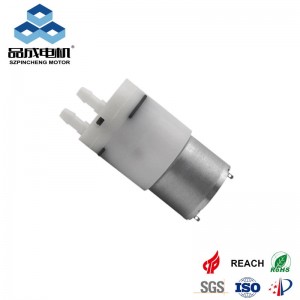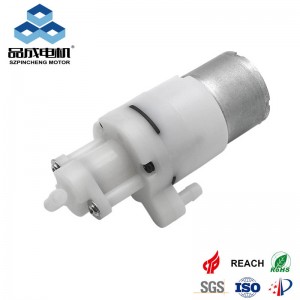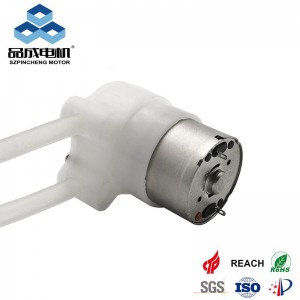DC DiaphragmPumps in Blood Pressure Monitors
- Type and Construction: The pumps used are commonly miniature diaphragm pumps. They consist of a flexible diaphragm, typically made of rubber or a similar elastomeric material, which moves back and forth to displace air. The diaphragm is attached to a motor or an actuator that provides the driving force. For example, in some models, a small DC motor powers the diaphragm's movement. This design allows for precise control of the air volume and pressure output.
- Pressure Generation and Regulation: The pump's ability to generate and regulate pressure is crucial. It must be able to inflate the cuff to pressures typically ranging from 0 to over 200 mmHg, depending on the measurement requirements. Advanced pumps have built-in pressure sensors that feedback to the control unit, enabling them to adjust the inflation rate and maintain a steady pressure increase. This is vital to accurately occlude the artery and obtain reliable readings.
- Power Consumption and Efficiency: Given that many blood pressure monitors are battery-operated, pump power consumption is an important consideration. Manufacturers strive to design pumps that can deliver the necessary performance while minimizing battery drain. Efficient pumps use optimized motor designs and control algorithms to reduce energy usage. For instance, some pumps only draw significant power during the initial inflation phase and then operate at a lower power level during the measurement process.
Valves in Blood Pressure Monitors
- Inflow Valve Details: The inflow valve is often a one-way check valve. It is designed with a small flap or ball mechanism that allows air to flow in only one direction – into the cuff. This simple yet effective design prevents air from escaping back through the pump, ensuring that the cuff inflates properly. The valve's opening and closing are precisely timed with the pump's operation. For example, when the pump starts, the inflow valve opens instantaneously to allow a smooth influx of air.
- Outflow Valve Mechanics: Outflow valves can vary in design but are mostly precision-controlled solenoid valves. These valves are electronically controlled and can open and close with great accuracy. They are calibrated to release air from the cuff at a specific rate, usually between 2 and 3 mmHg per second during the deflation stage. This rate is critical as it allows the sensors to accurately detect the changing pressure as the artery gradually opens up, which is essential for determining both systolic and diastolic blood pressure.
- Maintenance and Durability: Both inflow and outflow valves need to be durable and reliable, as any malfunction can lead to inaccurate readings. Regular maintenance, such as cleaning and inspection, is often recommended by manufacturers. Valves made of high-quality materials, like stainless steel or corrosion-resistant plastics, tend to have a longer lifespan and better performance over time. In some cases, self-cleaning mechanisms are incorporated into the valve design to prevent clogging by dust or other particles.
In summary, the pumps and valves in blood pressure monitors are highly engineered components that require precision and reliability. Their detailed design and proper functioning are what make modern blood pressure measurement accurate and dependable, safeguarding the health of countless individuals.
you like also all
Read More News
Post time: Jan-10-2025




